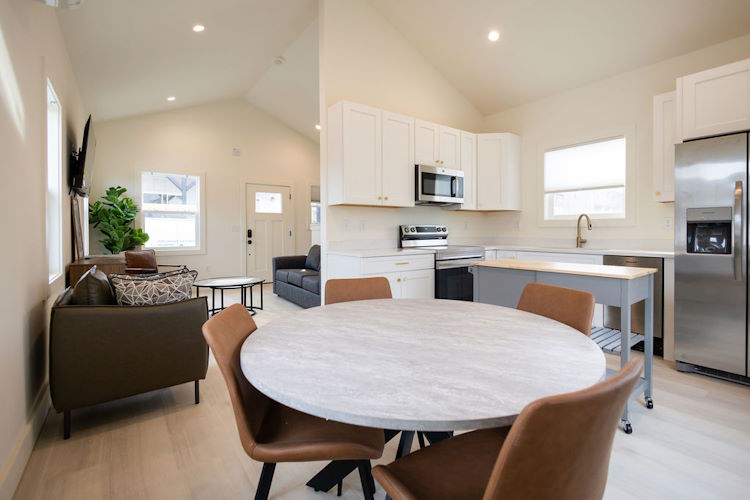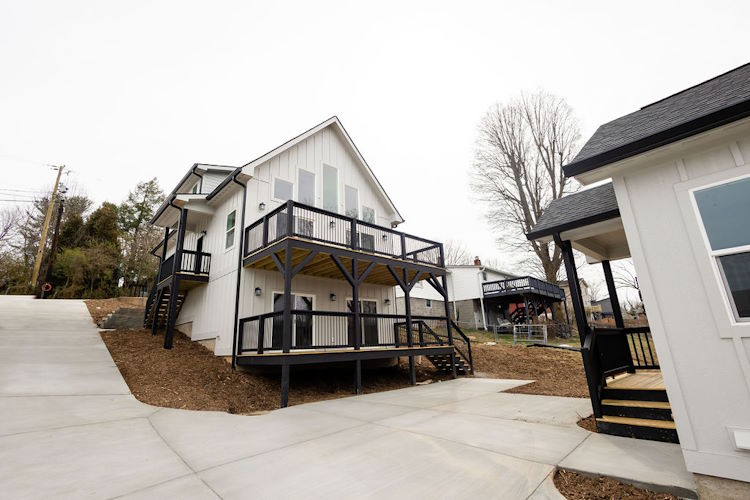The Future of Residential Living: Smart Neighborhoods and the Integration of Technology

The future of residential living is rapidly evolving as smart neighborhoods, driven by the integration of advanced technologies, become a reality. As we move deeper into the 21st century, the concept of a connected and intelligent community is no longer confined to science fiction. Instead, it is becoming a possible thing of urban development, promising to enhance the quality of life, increase sustainability, and improve efficiency in how we live. This article explores the various facets of smart neighborhoods and how technology is reshaping residential living.
The Concept of Smart Neighborhoods
Smart neighborhoods represent an innovative approach to residential living, characterized by the seamless integration of technology into homes, infrastructure, and community services. These neighborhoods leverage the Internet of Things (IoT), artificial intelligence (AI), and advanced communication networks to create an interconnected environment. The goal is to provide residents with a higher standard of living, enhanced security, and greater convenience, while also addressing broader societal challenges such as energy efficiency, sustainability, and resource management.
Technological Foundations
Internet of Things (IoT):
The IoT is the backbone of smart neighborhoods. By connecting various devices and systems, IoT enables real-time data exchange and automation. In a smart neighborhood, everything from home appliances to streetlights can communicate and operate in harmony. For instance, smart thermostats can adjust the temperature based on weather forecasts and residents’ preferences, while smart meters optimize energy consumption by monitoring usage patterns.
Artificial Intelligence (AI):
AI plays a crucial role in analyzing the vast amounts of data generated by IoT devices. Machine learning algorithms can predict trends, identify inefficiencies, and recommend solutions. In residential living, AI can enhance security through facial recognition systems, improve traffic management with intelligent routing, and even assist in healthcare by monitoring residents’ vital signs and alerting medical professionals if necessary.
5G and Advanced Communication Networks:
The deployment of 5G networks is a game-changer for smart neighborhoods. With its high-speed, low-latency capabilities, 5G enables seamless connectivity between devices and ensures that data can be transmitted quickly and reliably. This is essential for applications like autonomous vehicles, remote healthcare, and real-time surveillance, all of which are integral components of a smart neighborhood.
Key Features of Smart Neighborhoods
Connected Homes:
Smart homes are the building blocks of smart neighborhoods. These residences are equipped with devices and systems that can be controlled remotely via smartphones or voice assistants. From lighting and climate control to security and entertainment, smart homes offer unparalleled convenience and customization. Home automation systems can learn residents’ routines and preferences, making daily life more comfortable and efficient.
Sustainable Infrastructure:
Smart neighborhoods are designed with sustainability in mind. Renewable energy sources, such as solar panels and wind turbines, are commonly integrated into the infrastructure. Smart grids ensure efficient energy distribution and storage, reducing reliance on fossil fuels. Additionally, advanced waste management systems use sensors to optimize collection routes and recycling processes, minimizing environmental impact.
Enhanced Security:
Security is a top priority in smart neighborhoods. AI-powered surveillance cameras, smart locks, and motion sensors provide robust protection against intruders. Furthermore, neighborhood-wide security networks allow residents and authorities to monitor and respond to incidents in real time. This creates a safer environment for everyone, fostering a greater sense of community and trust.
Efficient Transportation:
The integration of technology in transportation is transforming how residents move within smart neighborhoods. Autonomous vehicles, electric scooters, and bike-sharing programs offer sustainable and convenient mobility options. Smart traffic management systems reduce congestion and improve safety by analyzing traffic patterns and adjusting signal timings accordingly. Additionally, residents can access real-time information about public transportation schedules and availability, making commuting more efficient.
Community Engagement:
Smart neighborhoods are designed to foster a sense of community among residents. Digital platforms and social media networks enable residents to communicate, collaborate, and share resources easily. Community apps can provide updates on local events, maintenance schedules, and safety alerts. This connectivity not only enhances social interactions but also empowers residents to participate actively in neighborhood governance and decision-making processes.
Challenges and Considerations
While the benefits of smart neighborhoods are substantial, several challenges must be addressed to realize their full potential.
Privacy and Data Security:
The extensive use of IoT devices and AI in smart neighborhoods raises significant concerns about privacy and data security. Ensuring that personal information is protected and that systems are secure from cyber threats is paramount. Robust encryption, strict data governance policies, and regular security audits are essential to mitigate these risks.
Digital Divide:
The transition to smart neighborhoods may exacerbate the digital divide, leaving behind those who lack access to technology or digital literacy. It is crucial to ensure that the benefits of smart neighborhoods are accessible to all residents, regardless of socioeconomic status. This requires investment in digital infrastructure, education, and support services to bridge the gap.
Interoperability:
For smart neighborhoods to function effectively, interoperability between various devices and systems is critical. Standards and protocols must be established to ensure seamless communication and integration. This involves collaboration between technology providers, policymakers, and industry stakeholders to develop and implement universal standards.
Cost and Investment:
Developing and maintaining smart neighborhoods requires significant investment. While the long-term benefits are clear, the initial costs can be a barrier for many communities. Public-private partnerships, government incentives, and innovative financing models are needed to support the widespread adoption of smart neighborhood technologies.
The Road Ahead

The future of residential living is undoubtedly intertwined with the evolution of smart neighborhoods. As technology continues to advance, the possibilities for creating more connected, sustainable, and efficient communities are limitless. However, realizing this vision requires a collaborative effort from governments, businesses, and residents.
Governments must play a pivotal role in setting regulatory frameworks and providing incentives for smart neighborhood development. Private sector innovation is crucial in developing the technologies and solutions that underpin smart neighborhoods. At the same time, residents must embrace and adapt to new ways of living, recognizing the potential benefits for themselves and future generations.
Smart neighborhoods represent a transformative shift in how we live, offering a glimpse into a future where technology enhances every aspect of residential life. By leveraging IoT, AI, and advanced communication networks, these communities promise greater convenience, sustainability, and security. However, addressing challenges such as privacy, the digital divide, interoperability, and cost is essential to ensure that the benefits of smart neighborhoods are realized by all. As we move forward, the collaboration between various stakeholders will be key to creating smart neighborhoods that truly improve the quality of life for everyone
